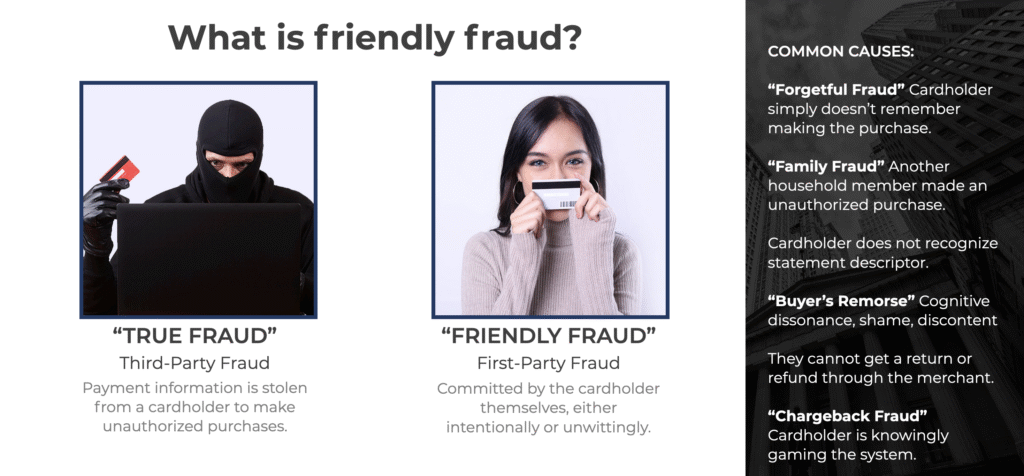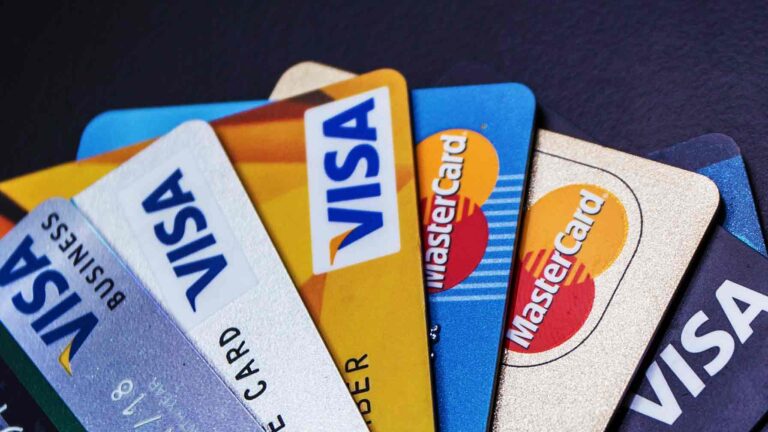Taking the Fight to Chargebacks: A Step-by-Step Guide to Dispute Management

How to Prevent and Dispute Chargebacks
Chargebacks are a serious risk for merchants big and small. Each year, they cost businesses many billions of dollars. Yet there are steps you can take to effectively prevent and reverse chargebacks. Fighting them requires a proactive approach, and when done right, this approach delivers significant ROI.
The proactive approach begins with understanding the total cost of chargebacks. Not only do merchants lose revenue and the product, all the costs of making, marketing and distributing the products are sunk as well. Add to that the fees and penalties and the cost of the average chargeback can be triple the transaction price. With the right tools and a proactive approach, however, businesses can both prevent chargebacks and win back their revenue.
There is a labyrinth of tools and solutions available to manage disputes, which merchants must configure and integrate into their sales stream. Managing these in house is a hassle most merchants would rather not deal with. That is why dispute management providers like ChargebackHelp integrate the right tools across all payment networks into one platform. This makes managing disputes accessible for merchants, so they can focus more on their core business.
We’re going to walk through preventing and fighting chargebacks. First, we’ll start with preventing them. In medicine, they say an ounce of prevention is worth a pound of cure. That’s equally true with disputes. But we’ll also cover contingencies for chargebacks that survive prevention.
Before jumping into fighting and preventing chargebacks, however, let’s take a quick look at the kinds of fraud that often lead to chargebacks.
Types of Chargeback Fraud
Chargebacks allow banks to claw back money and to return it to their cardholders. In the United States, Congress enshrined chargebacks into law. While laws may vary across jurisdictions, many governments the world over have set up similar rules and regulations.
Chargebacks do have a legitimate purpose. In most cases, legit chargebacks are needed to reverse fraudulent or unfulfilled transactions. A stolen card was used, the merchant may be shady in some way, or the goods were never delivered or arrived defective.
However, unwarranted chargebacks are the result of so-called “friendly fraud.” With friendly fraud, the actual cardholder makes the purchase and then files for a chargeback. They might not remember making the purchase or they simply want free stuff. Often, it’s hard if not impossible to distinguish between friendly fraud and other types of true fraud.

While chargebacks protect consumers, they also offer scammers a way to quickly and easily defraud businesses. And when a cardholder uses their card and then files for a chargeback simply to score free stuff, they’re committing chargeback fraud. Given the impact on businesses, fighting this type of fraud is vital.
Whether fighting chargebacks resulting from friendly fraud, criminals stealing card numbers, or whatever else, it’s important that businesses address them.
Proactively Preventing Fraud
Companies big and small mistakenly see fraud as a cost of doing business. Fortunately, there are many steps you can take to prevent fraud and their chargebacks. When fighting fraud, it’s important to adopt a proactive approach. Doing so will help you mitigate risks, including friendly fraud.
Never wait for chargebacks to be filed to fight them; doing so is a big mistake. The sooner you can preempt the disputes that lead to chargebacks, the better.
Let’s take a look at some methods and strategies for preventing chargebacks. This way, you can save time and money.
Use Clear Billing Descriptors
Some chargebacks are the result of confusion on the customer’s part and there may be no malice involved. For example, if you use unclear billing descriptors, cardholders may not recognize charges on their account. If they don’t recognize the charge, it looks to them like their card was stolen or misused.
Let’s say you own a company called Fetch that sells gourmet dog biscuits. However, a different organization and brand holds the merchant account — say John Doe Inc. When a customer is billed for the biscuits, it shows as John Doe Inc. on their bank statement, not as Fetch. Since the customer is unfamiliar with John Doe, they don’t recognize their Fetch purchase and may file a chargeback.
An easy way to prevent these types of chargebacks is simply using clear billing descriptors. Fortunately, ChargebackHelp provides retailers with plenty of data, tools and expertise to clarify billing.
Offer Accessible Returns
Don’t make it easier for customers to go to their bank than to get a return directly from you. If you don’t offer refunds or there’s a lot of friction, banks will rubber-stamp chargebacks against you. And, while banks recommend that customers call the merchant for a refund, they can also make it super easy to get the refund through them via chargeback.
Often, companies simply fail to recognize that their return policy is unnecessarily cumbersome. Other times, entrepreneurs intentionally make it difficult to secure a refund in the name of “revenue retention” or some other excuse. This is pennywise, and quickly drum up chargebacks.
If you offer a clear and easy-to-use, easy-to-find return policy, many banks will ask the customer to get in touch with you first. Likewise, unhappy customers can become lifelong patrons if they come to you and get a resolution, rather than filing a chargeback.
Write Accurate and Clear Copy
Why do customers return goods in the first place? This can vary on a case-to-case basis. However, poor product descriptions and marketing copy that over-promises and under-delivers are common causes. Many customers will end up disappointed and may ask for a refund or could file a chargeback.
Fancy copy and marketing strategies may drive sales, but if your words don’t match your deliverables, it causes dissonance downstream. Ensure that pictures, descriptions, and promotional language are as accurate as possible. This way, you’re more likely to meet customer expectations, keeping their experience positive and your revenue where it belongs.
Catch Fraud, PreAuthorization
Merchants are liable for processing true fraud transactions; it’s up to them to catch stolen information, hacked from data breaches on down to manually stolen cards lifted from a purse or wallet. Once authorized, these transactions will charge back successfully every time the cardholder catches them.
Fortunately, there are a wide array of fraud-filtering tools that analyze transactions and catch fraud in “pre-auth.” These tools might check shipping addresses, IP addresses, purchasing behavior, and more to determine if the transaction is legitimate. If something seems off, the provider can alert merchants and may also be able to put a pause on the transactions in question.
Common signs of fraud include:
- Overnight delivery: Many legitimate customers use overnight delivery, but so do criminals. If they can get their hands on the goods quickly, it’s harder to cancel the order.
- International shipping addresses: Many criminals operate outside of the countries they target, often putting them out of the reach of local law enforcement and courts.
- IP mismatches: Orders with different names and credit card numbers originating from the same IP address. In this case, it could be a criminal trying multiple cards.
- User behavior: First-time customers who don’t adhere to the typical consumer purchasing behavior.
Tracking the above occurrences is difficult. However, effective fraud-filters can actively surveil for suspicious activities and alert you to any red flags. The technology behind fraud filters — while impressive — is still evolving, and should by no means be used as a standalone solution for dispute management. Filters may prevent some fraud attacks, but they also filter legitimate transactions as well, which is its own costly can of worms.
Post Authorization Dispute Management
The aforementioned steps will help reduce the number of chargebacks your business gets hit with. However, chargebacks can evade even the best prevention solutions. However, even if a merchant has already authorized a payment, it may be possible to deflect the chargeback.
Let’s take a look at how businesses can deflect disputes post-authorization to preempt chargebacks.
Details + Data = Deflection

When a cardholder contacts their card issuer with a dispute, the bank will investigate their claim. ChargebackHelp’s deflection services enable merchants to easily inform cardholders and their issuers at this point of inquiry, when descriptors and authorizations fail. This information can prove that the transaction was legitimate before a dispute is raised.
For example, let’s say a customer claims that a product never arrived. With deflection, you can provide banks with signed shipping receipts in real time and immediately debunk such a claim. Likewise, a customer may fail to recognize your descriptor or something else in the transaction stream and they get suspicious. You can clear things up simply by delivering more data to their bank statements with these deflection tools.
ChargebackHelp’s Deflect module integrates Verifi Order Insight and Ethoca Customer Clarity. These tools use their parent company’s rails (Visa’s VROL and Mastercard’s Mastercom) to deliver data to the cardholder statement, at the point of inquiry, aka their online statements. The cardholder or issuer can access the additional information below the transaction descriptor. This way, banks and customers have answers to questions their descriptors do not provide. The right info in the right place and time will deflect a dispute.
Dispute Alerts Preempt Chargebacks
If deflection doesn’t do the trick, you can use alerts to resolve disputes once a customer raises a complaint, but before their bank files the chargeback. Chargebacks get the cardholder their money back from true fraud, but the merchant then gets hit with fees and a lopsided chargeback ratio. Whereas with dispute alerts, merchants can refund the cardholder before their bank inevitably takes the money by chargeback. It’s the same outcome, but without the costly accouterments of fees and penalties.
If the customer has a legitimate dispute, say from true fraud or you screwed up an order, they’re going to get their money back one way or another. In such cases, you can protect yourself from fees while also keeping your chargeback ratio low simply by refunding them their money. You may not want to lose revenues, of course. But you also don’t want to compound your losses from negligence. Limit your losses whenever possible.
The ChargebackHelp Resolve module integrates dispute alert service from most issuing banks, through Verifi CDRN and Ethoca alerts. Resolve’s integrations make it a card-agnostic solution where all disputes appear in a single, manageable endpoint.
Recovering Revenue With Effective Dispute Management
Even if you work hard to deflect disputes and prevent chargebacks, you’ll actually want some chargebacks to go through. Sometimes, you don’t have effective and compelling evidence to block unwarranted disputes at the deflection point, sometimes, the cardholder or issuer simply ignores your data, or maybe the cardholder has a change of heart months after the transaction. In those cases, you’ll actually want the chargeback to go through so you can fight it and recover the revenue.
The merchant initiates representment by re-presenting the original transaction, plus a rebuttal letter carrying the key evidence that ties the cardholder to their purchase. With the right evidence, you can win chargeback disputes and recover your revenue.
However, even though you win a representment, you’ll still be on the hook for chargeback fees and penalties. Still, this is far better than leaving the revenue on the table. Each merchant is different, but each should know which disputes and transaction amounts to fight for. You’ll also need to know which disputes to catch and represent.
Studying the Chargeback Notification and Reason Code
When a card-issuing bank files a chargeback on behalf of their customer, they will get in touch with the merchant’s acquiring bank. The acquirer will be provided with a reason code and will pass it on to the merchant. You can reference this code to get a general idea of why the chargeback was filed.
If you’re going to represent on the chargeback, your first step is figuring out why it was filed. Once you have the reason code in hand, you can look up what it means. This will help you get situated. The reason code will also help you determine whether you should dispute the chargeback or if you should simply concede. If the cardholder has a valid reason and strong case for filing, you may want to accept it and save yourself time and energy.
That said, chargebacks are often filed in an effort to defraud the business via friendly fraud. Many business owners will want to fight these chargebacks. If the case is unwinnable, however, it may be better to cut your losses and to avoid wasting time on a lost cause.
Fighting Chargebacks Through the Representment Phase With a Rebuttal Letter
If you decide to fight the chargeback, the next step is to put together a rebuttal letter. In this letter, you’ll argue for the chargeback to be dismissed. How you go about your argument will depend on the reason code and the individual circumstances of the transaction.
Some of the preventative measures discussed earlier may come into play here as well. If you offer a simple and easy-to-use return process, you can point that out and let the bank know that the consumer had other options besides filing a chargeback.
Dispute Management Tools Optimize Representment
When putting together your rebuttal, you’ll gather all compelling evidence that proves the transaction was legitimate. Evidence can come in many forms, such as IP addresses, communication with customers, shipping receipts, mailing addresses, past purchasing records, and more.
Gathering all the data can be time-consuming and difficult. And if you miss important deadlines, the risk of losing your case will increase. Fortunately, platforms like those offered by ChargebackHelp allow you to quickly gather and store evidence while keeping track of important deadlines.
It’s especially important to get the AVS (address verification) and CVV (card verification value on the back) for credit and debit card transactions. Winning a dispute without these numbers is difficult. The AVS and CVV data points are used to increase security and authenticate the purchase. Their use helps reduce illegitimate transactions. Typically, you can obtain a transaction receipt proving that a CVV or AVS was used through your payment gateway.
Keep Your Rebuttal Letter Short and Sharp
Once you have all the evidence gathered, you’ll want to spell out your argument in a rebuttal letter. This is where you “represent” the transaction and argue that it was legitimate. Each rebuttal letter should be customized to the individual circumstances of the case.
Like all of us, bank staffers are often short on time. You want to skip filler content and get right to the point. This way, decision-makers will pay closer attention to the most important elements of your argument. Plus, you may score points for respecting their time.
Over time, you’ll also start to develop a shorthand for what works and what doesn’t work. It’s wise to experiment and track your successful disputes. After you win a dispute, take a moment to review your rebuttal letter. This will help you understand what arguments are most effective.
Different arguments and evidence may work better with certain banks and institutions. The internal policies and staff training for banks can vary. As a result, a letter that is compelling to one bank may not be compelling to another. So it’s smart to pay attention to and track how individual organizations respond.
If you’re having trouble figuring out which bank you’re dealing with, you can look at the first 6 digits of a credit or debit card, known as the BIN, to suss out the bank’s identity.
A Proactive Approach Protects Your Business
If you follow all of the above advice, you’re well on your way to reducing and fighting chargebacks. Unfortunately, without the proactive approach, you could end up overwhelmed by disputes, lost revenues, fees, and more, being proactive sets the foundation on which your dispute management depends. Failing this, you’ll have less money to put into marketing and building up your inventory, and less time to focus on core business. Quickly, merchants can fall behind more proactive competitors.
Fighting and preventing chargebacks takes effort and resources. However, doing so helps you compete and allows you to build a more healthy, sustainable business. With providers like ChargebackHelp, you can prevent and manage disputes quickly and easily. This way, you can protect and recover revenue, while still remaining focused on marketing, selling, shipping, and other important business processes.







